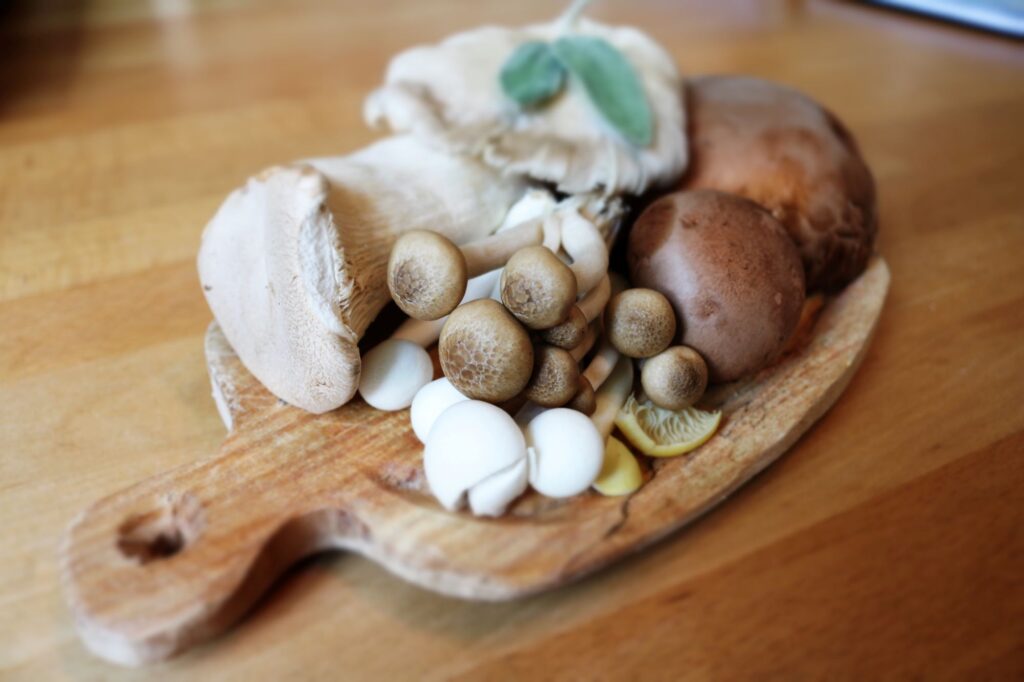Discover a fuss-free way to enjoy the bold flavors of Korean cuisine with my easy Vegan Kimchi Soup Recipe. This plant-based dish is simple, delicious, and features the goodness of fermented kimchi. This offers a simple and easy way to make an uncomplicated yet flavorful dish. It’s also a great choice for a fast and delicious meal.
Traditional Korean Kimchi Soup
In Korea, Kimchi Soup, or “Kimchi Jjigae,” is typically made by simmering aged kimchi with ingredients like tofu, vegetables, and sometimes pork or beef. The aged kimchi provides a tangy and robust flavor to the broth.
The dish is known for its simplicity – ingredients are often added based on what’s available, making it a versatile and practical meal in Korean households. The combination of fermented kimchi and savory additions also creates a comforting soup enjoyed for its depth of flavor and cultural significance.
The Health Benefits of Savory Kimchi Soup
Korean Kimchi Soup offers a range of health benefits. Firstly, it’s rich in probiotics from the fermented kimchi, promoting a healthy gut microbiome and aiding digestion. The vegetables and tofu contribute essential vitamins and minerals, supporting overall well-being. The broth’s spices, like garlic and red pepper flakes, contain antioxidants with potential anti-inflammatory properties.
Additionally, Korean Kimchi Soup is often low in calories and a good source of plant-based protein when made without meat. It’s a wholesome option for those looking to incorporate nutrient-dense, flavorful meals into their diet. The combination of ingredients makes this soup a nourishing choice that not only satisfies the taste buds but also contributes to a balanced and health-conscious lifestyle.
Reviving Over-Fermented Kimchi

In Korea, many households use special kimchi refrigerators to extend the lifespan of kimchi, typically lasting 3 to 6 months before developing a more fermented taste. In a regular refrigerator, kimchi tends to last about two to three weeks, and when it becomes over-fermented, it acquires a sour taste. This aged cabbage kimchi, while less fresh, becomes a versatile ingredient for various dishes.
Unlike other kimchi varieties, cabbage kimchi, especially when over-fermented, remains highly adaptable. One popular way to utilize aged cabbage kimchi is by making Korean Kimchi Soup. This straightforward recipe proves especially convenient since adopting a plant-based diet. It has become my go-to option on nights when I crave something spicy and warm, featuring tofu as my preferred source of protein.
Enhancing Flavor and Health
I incorporate mushrooms into my soup for added health benefits like B-vitamins, minerals, and antioxidants. Mushroom enthusiasts will find them to be a versatile addition to any Korean soup.
In addition to mushrooms, I make sure to include a variety of vegetables like carrots and broccoli, each contributing its unique health benefits. Feel free to experiment with different types of vegetables to enhance both flavor and nutrition.
Mushrooms, for me, serve as an excellent substitute for the chewy texture often associated with meats or seafood. Non-vegans can also explore various meat or seafood options to suit their preferences.
Before I embraced a plant-based diet, I used pork in my Korean kimchi soup, providing a richer and thicker consistency that meat eaters tend to enjoy. This soup held a special place as a beloved favorite in my family during our growing-up years.
If Korean broth is unavailable, water can be used as a substitute, but keep in mind that the soup may not be as flavorful. I highly recommend using broth if you have the time to prepare it.
Simple Vegan Korean Kimchi Soup Recipe

Ingredients
- 1 cup chopped kimchi
- 1/2 onion, thinly sliced
- 2 cloves garlic, minced
- 1/2 tablespoon gochugaru (Korean red pepper flakes)
- 1 Tbs of soy bean paste (optional)
- 4-5 cups Korean vegetable broth or water
- 1 cup cubed firm tofu
- 2 green onions, chopped
- 1/2 cup of Mushrooms of your choice (optional)
- Salt to taste
- Cooked rice for serving
Instructions
1. To start, use a pot to combine Korean vegetable broth and soybean paste. Bring the mixture to a boil, then reduce the heat to medium and let it simmer for about 5-10 minutes. This helps form the base for your Korean kimchi soup.
2. Next, incorporate the key elements – kimchi, minced garlic, gochugaru (Korean red pepper flakes), and onion. Then, continue to cook for another 3-5 minutes, allowing the flavors to blend.
3. If using mushrooms, add them to the boiling soup. Let the soup simmer for an extra 5 minutes, allowing the mushrooms to enhance the overall flavor.
4. Now, introduce tofu and green onions into the simmering mix and allow them to gently simmer for another 10-15 minutes. Adjust the taste by seasoning with salt or additional soybean paste according to your preference.
7. To serve, begin by ladling the Korean kimchi soup into a bowl. You can also pair it with a side of cooked steamed rice for a satisfying meal.
Tip: I often enjoy this meal by pairing it with roasted seaweed. I wrap the steamed rice in the seaweed sheets and complement it with the Korean Kimchi soup. It creates a perfect combination!














